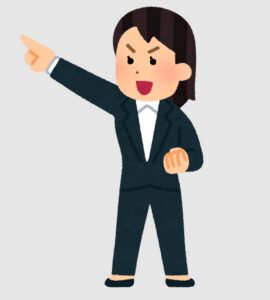管理人オススメコンテンツはこちら
「現状を把握する|金欠地獄からの脱獄マニュアル」
今日は【貯める力】
自由への家計簿
経済的自由の6つのレベルと
セミリタイアのための家計管理について
というお話をします。
●経済的自由の6レベルとは?〜今の自分を知り、“お金の不安”から脱出する方法〜
知り合いが相談を受けたそうです。
「まだまだ時間を使い
労働する事でしか
お金を得られていませんが
副業を始めてしっかりと
お金を貯めて資産運用をして
お金の不安無く
自由気ままに暮らしたい
と思っています。
自由とはどういうものなのか?
そこまでどれぐらい
道のりが有るのか?
何が目指すべき指標など
はありますか?」
とのこと。
経済的自由というと
6つのレベルに分かれていると
言えるのではないかと思います。
今日は
・経済的自由度をはかるための事前準備
・6つのレベルとはどのような状態なのか
この2点を中心にお話しをします。
経済的自由度を上げるには
どうすればいいのか?
という事についてもお話しします。
●経済的自由度をはかるための事前準備
まずは4つの箱を使って
自分の支出の仲間分けする
必要が有るんですね。
.png)
(出典:リベラルアーツ大学)
自分の支出を
仲間分けする必要が有る。
(1)基礎生活費
(2)ゆとり費
(3)月の予算
(4)年の予算
が有って
順番にお話ししていきます。
(1)基礎生活費(月の予算)
①の箱の中には
生きていくための最低限必要なコストで
毎月支払いが発生するものが入るんですね。
例えば
・水道光熱費
・食費
・日用品
まさに生活の根幹とも言える
絶対に必要な費用です。
あとは住居費や
住むエリアによっては
車両関係費なんかも入ります。
どうしても田舎だから
車が必要だという場合ですね。
これらが基礎生活費です。
(2)基礎生活費(年間予算)
②の箱には
生きていく為に最低限必要なコストで
毎月ではないが
不定期で支払いが発生するもの
といった項目が入ります。
例えばどういうものかというと
・家具や家電
・税金や社会保険料
・医療費
また
・必要最低限の洋服代
毎月は買わないけど
洋服はいりますよね?
こういったものが
これに該当するんですね。
毎月支払う訳じゃないけど
絶対に必要なもの。
これが②に入ってきます。
〜〜〜つづく〜〜〜
Special Thanks college president Ryo.
●おまけ
≪≪perplexityちゃんによる文章まとめ≫≫
経済的自由を目指すには、まず自分の家計状況を整理し、現状を把握することが重要です。
経済的自由には6つのレベルがあり、自分がどの段階にいるかを知ることで、お金の不安から解放される道筋が見えてきます。
そのための第一歩として、支出を「基礎生活費(月の予算)」「基礎生活費(年間予算)」など4つの箱に分けて管理します。
基礎生活費(月)は毎月必ずかかる費用(水道光熱費、食費、住居費など)、年間予算は家具や医療費、税金など不定期に発生する必須支出です。
こうして支出を整理することで、目標や改善点が明確になり、経済的自由へのステップが具体的になります。
[1] https://kobito-kabu.com/jiyuuheno-kakeibo-6level/
[2] https://simple-hira.com/4238.html
[3] https://simple-hira.com/14266.html
[4] https://www.fsa.go.jp/teach/simulation/household_spending.htmlhttps://simple-hira.com/14422.html
[5] https://note.com/mizukiw_55fire/n/nc0ba62b30ce1
[6] https://www.a-ifa.jp/feature/column/column32.html
[7] https://manekomi.tmn-anshin.co.jp/kakei/17634001
[8] https://www.central-tanshifx.com/topics/thinkaboutmoney/columns/clm14.html
≪≪Chat-GPTくんによる英訳≫≫
Today’s Topic: The Power of Saving
—
A Household Budget for Freedom
Understanding the 6 Levels of Financial Freedom and Budget Management for Semi-Retirement
—
Today, I’d like to talk about:
The 6 levels of financial freedom
How to manage your household finances for semi-retirement
—
What Are the 6 Levels of Financial Freedom?
Know where you are now and escape the fear of money
Someone I know recently received a consultation. Here’s what the person said:
—
> “Right now, the only way I can earn money is by exchanging my time for labor.
>
> But I’ve started a side job and I’m working hard to save money and invest it.
>
> Ultimately, I want to live freely and without financial anxiety.
>
> But what exactly does freedom mean?
>
> How far is the road to get there?
>
> Are there any specific goals or indicators I should be aiming for?”
—
This person’s questions made me think:
When we talk about financial freedom, I believe we can break it down into six distinct levels.
—
So today, we’ll focus on two key points:
1. Preparing to measure your level of financial freedom
2. Understanding what each of the six levels represents
I’ll also touch on the question:
> “How can we increase our financial freedom?”
—
### Preparing to Measure Your Level of Financial Freedom
First, we need to categorize our spending using four boxes.
(Source: Liberal Arts University)
In other words, it’s necessary to group your expenses to gain clarity.
The four categories are:
1. Basic Living Expenses
2. Discretionary Expenses (Comfort Costs)
3. Monthly Budget
4. Annual Budget
Let’s go through them one by one.
—
(1) Basic Living Expenses (Monthly Budget)
The first box includes the minimum costs required to live—expenses that occur every month.
Examples include:
Utilities (water, gas, electricity)
Food
Daily necessities
These are essential, non-negotiable costs that form the foundation of your life.
Housing costs also go here.
Depending on where you live, car-related expenses may also be necessary—
especially in rural areas where having a vehicle is unavoidable.
These are all part of your basic living expenses.
—
(2) Basic Living Expenses (Annual Budget)
The second box covers essential costs for living that don’t occur monthly, but are still unavoidable and come up irregularly.
Examples include:
Furniture and appliances
Taxes and social insurance premiums
Medical expenses
Essential clothing
You don’t buy clothes every month, but you still need them, right?
These kinds of costs, which are irregular but absolutely necessary, go into the second box.
Special Thanks OpenAI and Perplexity AI, Inc







